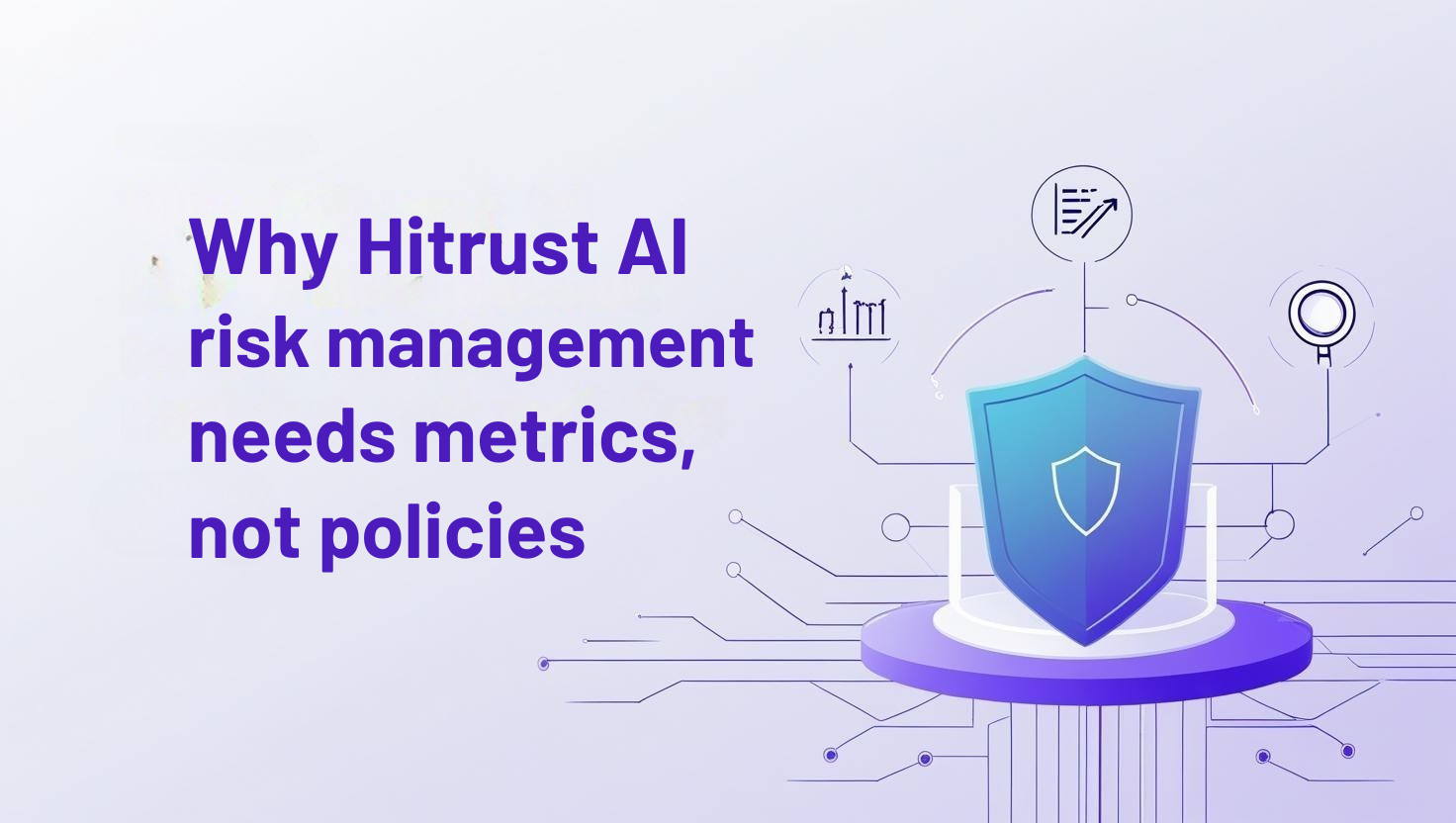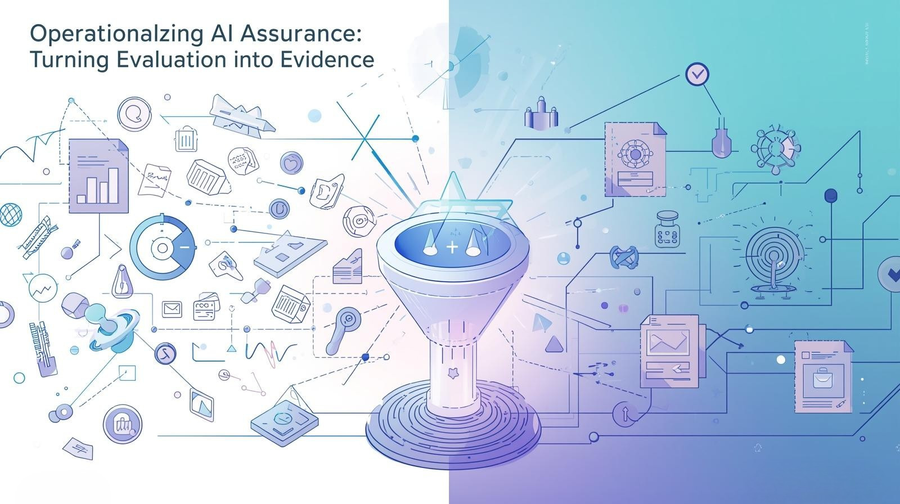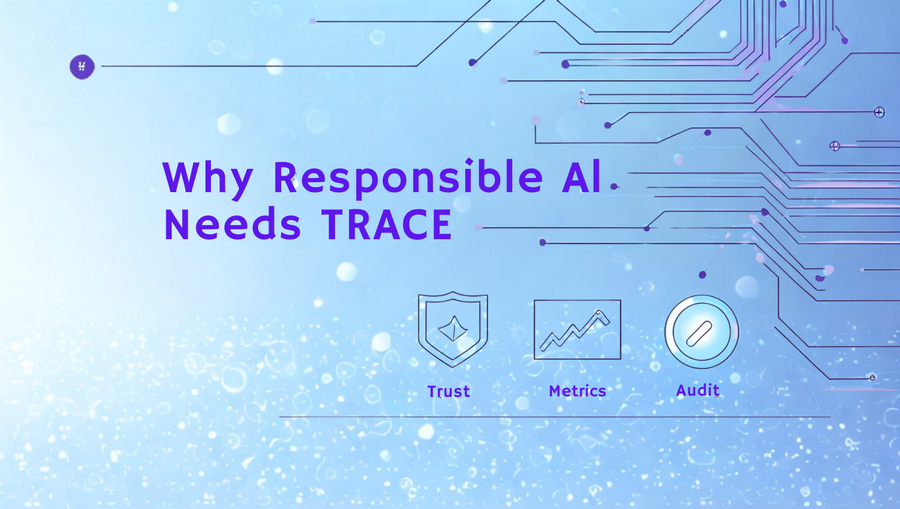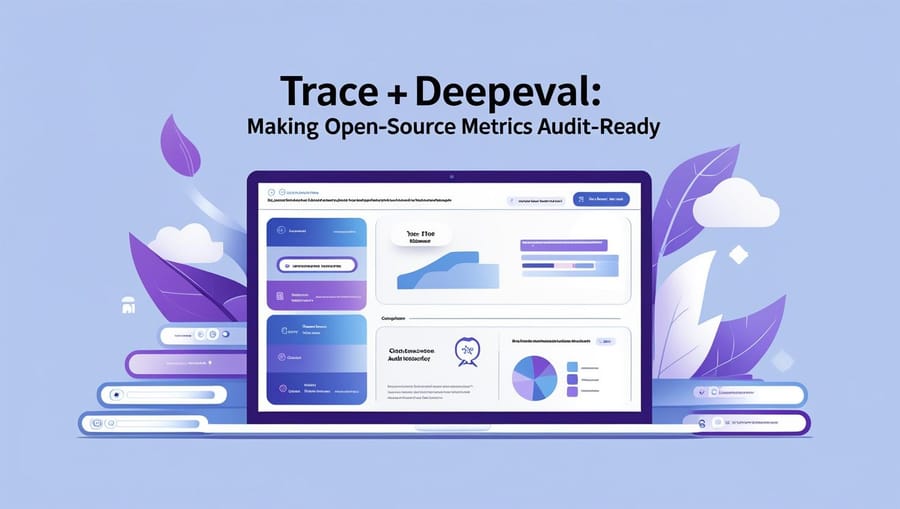HITRUST’s AI Risk Management Assessment pushes healthcare beyond checklists. Learn why live model metrics are now mandatory—and how TRACE automates the proof.
Spreadsheets Don’t Stop Hemorrhages
The average U.S. hospital spends twenty-three business days assembling AI evidence for a single HITRUST audit. Meanwhile, a diagnostic model can drift from 2 percent to 9 percent false-negative rate in the same period.
What good is a PDF policy if the patient on today’s table is misdiagnosed?
The Compliance Pendulum Has Swung
HITRUST joins a new guard of “measurement-first” frameworks
- HITRUST AI Risk Management Assessment (AI RM) introduced 51 prescriptive controls in 2024. Four of them—RM05 to RM08—explicitly require continuous evaluation, monitoring, and mitigation evidence.
- ISO 42001 goes further, mandating systematic performance measurement and incident handling for AI.
- The EU AI Act obliges high-risk systems to maintain a “living” risk-management process across the entire lifecycle.
The paper era is over: auditors now expect data in motion, not just documented intent.
Policies without proof create blind spots
- Policies capture what should happen; metrics capture what did happen.
- Drift, bias, or adversarial failures occur between audit cycles, leaving compliance teams clueless until an incident surfaces.
- Manual evidence collection steals weeks of clinician and data-science time, delaying life-saving roll-outs.
What HITRUST Actually Wants
| Control | Required evidence | Example metric |
|---|---|---|
| RM05 Evaluation and Monitoring | Ongoing performance, bias, robustness tracking | Area under curve, demographic-parity gap, adversarial accuracy |
| RM06 Measurement Validity | Proof that metrics remain representative over time | Population-stability index, KL divergence |
| RM07 Transparency and Explainability | Coverage and stability of interpretability outputs | Percentage of predictions with SHAP values, feature-importance drift |
| RM08 Mitigation and Response | Documented corrective actions for threshold breaches | Alert logs, retraining timestamps, rollback events |
Auditors will ask for traceability from raw metric through threshold to mitigation—all timestamped.
The Human Cost of Manual Evidence
- Three weeks lost per model. Interviews across five hospital groups show an average of 120 engineer hours spent exporting, cleansing, and re-formatting metrics each audit cycle.
- External consultant fees. Assessors bill additional hours translating those metrics into control language.
- Delayed patient impact. A Midwest imaging network postponed a chest-X-ray AI roll-out by 65 days, affecting 40 000 scans, because evidence wasn’t audit-ready.
Manual workflows aren’t just inefficient—they jeopardize care.
Building a Metrics-to-Control Pipeline
1. Instrument ruthlessly
- Bias: demographic-parity difference, equal-opportunity gap.
- Performance: sensitivity, specificity, area under curve.
- Drift: population-stability index, Wasserstein distance.
- Robustness: adversarial accuracy under worst-case noise.
- Explainability: coverage of SHAP or LIME explanations.
2. Anchor thresholds in risk
- Align bias thresholds with FDA imaging safety guidance.
- Calibrate drift ceilings to historical population variance and clinical risk tolerance.
- Document rationale so auditors see the “why,” not just the number.
3. Map metrics to controls in code
- Metric → Risk type → HITRUST control → Evidence ID.
- Store mapping logic in a Git-versioned schema for instant replay during audits.
4. Automate evidence packets
- Generate daily JSON or PDF files that include metric values, thresholds, current status, and mitigation steps.
- Push packets directly into ServiceNow, OneTrust, or your preferred GRC portal—no copy-paste.
5. Deliver role-based dashboards
- Engineers see failing tests and remediation playbooks.
- Compliance officers review clause-status heatmaps.
- Executives track a single readiness score across all models.
Case Study: 50-Clinic Imaging Expansion
Challenge
A regional health system wanted to expand a chest-X-ray AI from five pilot sites to 50 clinics. Compliance required HITRUST AI RM readiness before deployment.
Old approach
- Monthly metric exports.
- Bias reviewed in a slide deck.
- Mitigation steps logged in a shared drive.
Pain
Audit prep consumed 15 days and stalled the roll-out for two months.
Metric-driven approach using TRACE
- Bias, drift, and robustness scores streamed from the CI pipeline.
- TRACE automatically mapped each metric to RM05–RM08 and generated nightly evidence packets.
- Assessors accessed a self-service portal to verify raw data.
Outcome
Audit prep time fell below an hour, the model went live on schedule, and no documentation gaps were flagged.
TRACE Bridges Metrics and Controls
Teams could piece together custom scripts, but most don’t have bandwidth to maintain a compliance codebase. TRACE offers a turnkey engine:
- Connect: Plug into MLflow, SageMaker, DeepEval, or plain CSV exports.
- Map: TRACE’s open schema links every metric to HITRUST controls, and—if desired—to NIST RMF, ISO 42001, and EU AI Act clauses.
- Monitor: Real-time threshold alerts trigger mitigation workflows and log every action for RM08.
- Prove: Clause-linked PDF and JSON packets export nightly; auditors can trace evidence back to raw metrics in seconds.
Because TRACE ingests metrics only—never raw images or text—it sidesteps PHI exposure while satisfying the strictest hospital privacy rules.
Emerging Trends to Watch
- API-first auditing: External assessors increasingly ask for live API access rather than emailed zip files.
- Cross-framework alignment: Organizations map one metric set to multiple frameworks to avoid redundant evidence generation.
- Security meets fairness: Adversarial robustness metrics are being reviewed alongside bias, reflecting a broader interpretation of patient safety.
Key Takeaways
- HITRUST AI RM shifts healthcare compliance from static policies to continuous metrics.
- Controls RM05–RM08 explicitly require live monitoring, validity checks, and mitigation evidence.
- Manual evidence collection wastes weeks and risks patient safety.
- A metrics-to-control engine like TRACE converts raw model data into audit-ready proof, slashing prep time and accelerating clinical roll-outs.
- Early adopters already cut audit delays from months to days while serving tens of thousands more patients.






